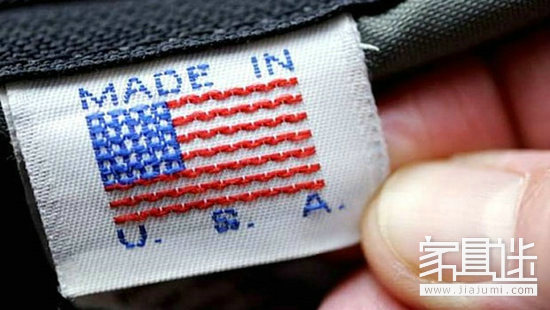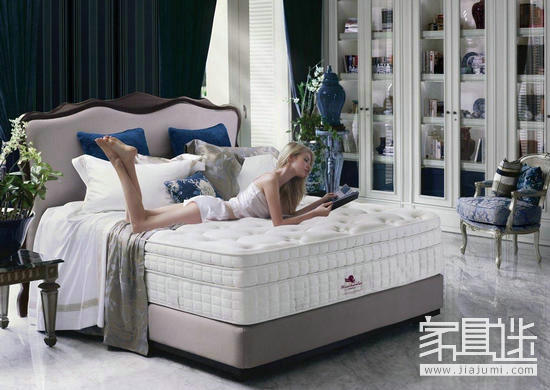In the Chinese furniture market, American brands are often regarded by consumers as a symbol of “higherâ€, and this phenomenon is also derived from the mattress industry. In the Chinese mattress market, the famous "3S" is well known to the public, Simmons, Shuda, and Silk. These American brands that have crossed the ocean have not only sweared in the Chinese market to sell high price tags, but also segmented the consumer groups of domestic mattress brands. Is the foreign moon really round? Is it even better to sleep on the mattress? When we spit out Chinese consumers, they would like to see how American consumers view the "high-end brands" in the eyes of Chinese people. Perhaps American consumers, like Chinese consumers, believe that imported brands are stronger than local brands?
In the United States, it is believed that the purchase of domestically produced goods is an effective way to support the domestic economy, and this concept has also been derived from the mattress industry. The place of manufacture of a commodity will have a great impact on the cost, quality, etc. of the commodity, which is undoubtedly crucial for consumers. Therefore, understanding the manufacturing genes of a mattress can make a big difference when consumers buy mattresses.

made in America
Mattress: Made in the USA VS. US imports
In the US mattress market, American and non-US local brands are diverse, providing consumers with many choices and even dazzling. However, Harris Pollof's recent survey of more than 2,100 US consumers shows that 74% of consumers believe that buying native American furniture is very important. When we look at the survey results, the reasons why Americans buy US domestic goods from strong to weak are in support of local industry, product safety performance, product quality, patriotism, human rights issues, and the impact of the big environment. These factors that influence the purchasing motives of American consumers also exist in the mattress industry, which played a decisive role in consumers buying mattresses.
Production regulations
Different countries and regions have different legal provisions on product manufacturing procedures and product manufacturing technologies. The health standards and safety standards for products in the United States and European countries are more stringent than those in other countries in the world. For example, US law requires all mattresses to pass flammability tests and prohibit the use of toxic additives (such as pentabromodiphenyl ether, formaldehyde) and manufactured chemicals (such as Freon). Phthalates (DEHP, DBP and BBP) are also banned for use in children's mattresses.
However, these stringent standards have only played a self-restraint role, and many companies are still playing the ball. Therefore, in recent years, there have been many incidents in the United States where mattresses have been recalled due to quality problems, and among them, non-US-made mattresses are mostly produced. The most common reason for the recall of new mattresses is the failure to pass flammability standards. Of course, in recent years, non-National baby mattresses with particularly loud advertisements have been recalled for containing prohibited chemicals.
Environmental protection
In recent years, when consumers buy mattresses in the United States, the potential impact of environmental issues has become more prominent. Because Americans are now looking for a greener ecological lifestyle, American consumers also advocate environmental protection for furniture.
Mattress price
Non-US local brands are slightly cheaper than US brands because non-US brands are relatively inexpensive in terms of production costs and labor costs. However, US domestic brands still maintain strong competitiveness in the US mattress market because they spend less on logistics costs.

Jin Keer mattress
American native mattress brand inventory
Below we list some American native mattress brands as well as non-US mattress brands. Some of the so-called Native American brands may use non-US-made foams and fabrics, but only in the United States.
(Note: Brands with Chinese translation are American brands that have entered the Chinese market)
Related reading of the fastest growing domestic mattress brand in 2014: Jin Keer
>>Spring bed
Aireloom love nightmare
Denver Mattress
Englander
King Koil
Kingsdown (has entered the Chinese market)
Sealy / Stearns & Foster
Serta Shuda
Simmons Simmons
>>Memory
Aerus
Amerisleep
Bed In A Box
Bodipedic
Comfort Dreams
Novaform
Sealy Optimum
Serta iComfort
Simmons Comforpedic/ Curv Simmons
Sleep Innovations
Tempurpedic North America Tempur
Ultimate Dreams
>>Latex mattress
Astrabeds
ECO
Flobeds
FoamSweetFoam
Latex Bliss
OMI
Plushbeds
SavvyRest (assembled in us)
Sleep EZ (somes imported)
>>Waterbed/Other special mattresses
American National
Boyd
Innomax
Land And Sky
Strobel
Vinyl Products
>>Non-US local brands
(Imported brands that Americans are familiar with, not a complete list)
DUXIANA (Sweden)
Essentia (Canada)
Hastens (Sweden)
IKEA IKEA
Night Therapy (China)
Sleep Science (China)
Spa Sensations (China)
So, do Americans really care about "made in the US" when they buy mattresses? Rather, American consumers are more rational, and they believe that a “Made in USA†mattress does not represent better quality and value. The quality of production, environmental protection, product safety and the economic situation of consumers themselves have become the priority factors for American consumers to purchase mattresses.
When comparing American mattress brands with non-US mattress brands, the most important thing is to consider what kind of filler is inside the mattress, whether the product quality is directly proportional to the product price, and the possible impact of the production materials on the natural environment. Whether this mattress makes you feel comfortable. In fact, the majority of the dominant brands in the US mattress market are still American brands, at least in the United States for production and assembly. Therefore, in the US mattress sales market, the US brands that consumers can see are still relatively large compared to non-imported brands.
In addition to the brand, consumers should better understand the material of the mattress, memory foam or latex, the number of coils of the spring or the density of the memory... The content and cost of each raw material, whether it is fireproof material, and the warranty of the mattress, After-sales protection such as returnable period. Consumers can also search for branded mattresses online to help identify potential advantages and disadvantages when purchasing mattresses.
Conclusion: Whether it is a Chinese consumer who is being squandered by "Chongyang Meiwai" or an American consumer who is willing to support domestically produced goods, when choosing a mattress, it is more important than the brand and the place of manufacture is the product quality and cost performance. It is very important to be a savvy, savvy and identifiable consumer, especially if everyone sleeps for several years.
(Original title: Does Americans care about "made in the USA" when they buy a mattress?)
Dining Chair Modern,Dining Chair Velvet,Dining Chair Modern Elegant,Dining Chair Wood
BOSA FURNITURE CO.,LTD. , https://www.bosafurniture.com
